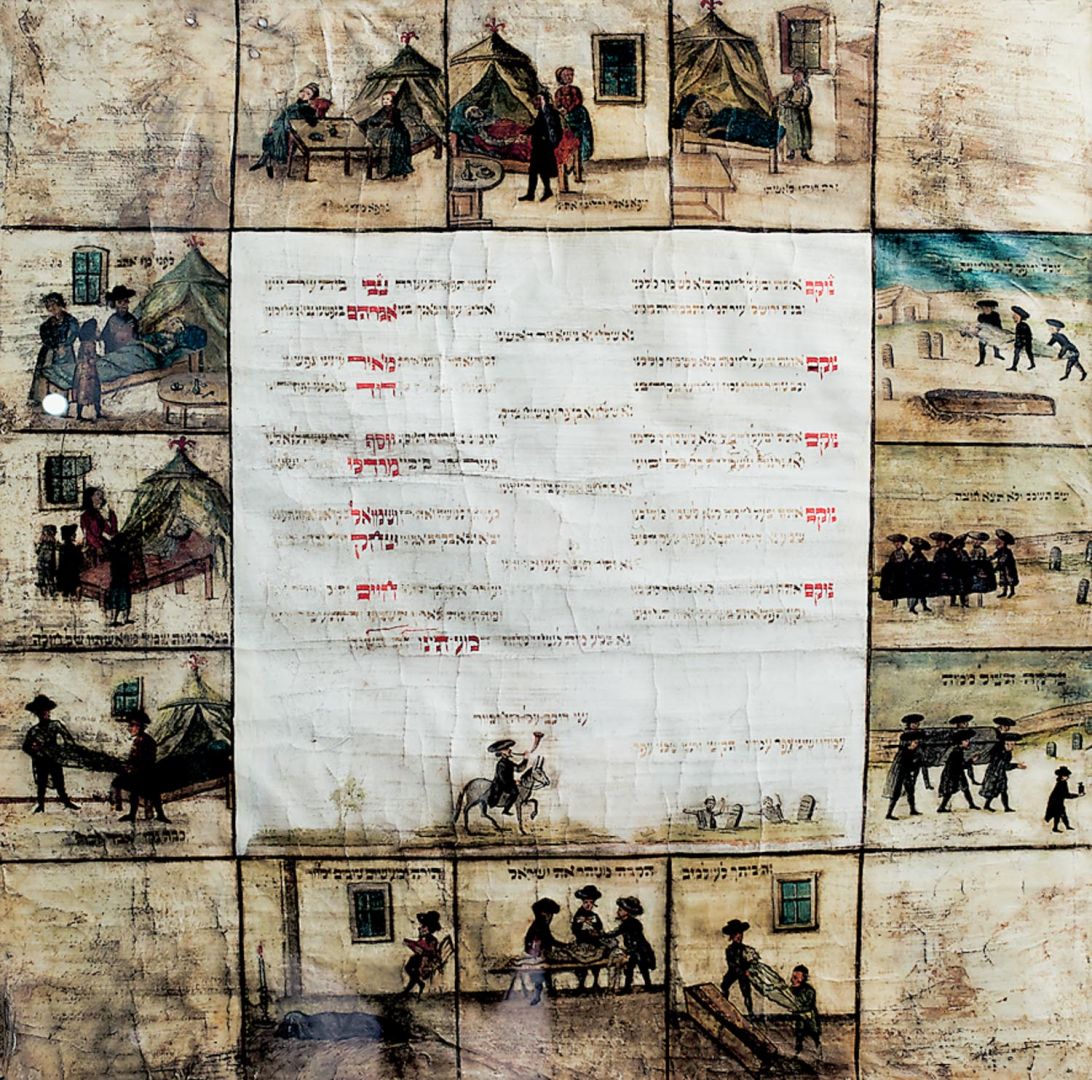4. Hall - 7. view
Memorial page
This is a memorial page showing the services of the Chevra Kadisha, and it was made in 1800 in Gyöngyös. In the middle of the parchment the inscription contains the names of the officers of the Chevra Kadisha in rhyme. Surrounding the text there are twelve pictures of death and burial. The pictures follow each other according to the direction of Hebrew writing, from right to left, starting from the picture in the upper right corner – the sequence of events can thus be followed in an anti-clockwise direction. The three pictures on the top show scenes of illness: wife at her husband’s sickbed, physician visiting the patient, and the recovery of the patient. On the top picture on the left hand side, the patient is in bed again, surrounded by men in the traditional clothing of the time: the members of the Chevra Kadisha visit the sick and pray together, which is implied by the prayer book in the hand of the man on the right. The picture underneath shows the point of death, as the inscription says. The next picture shows how two men in a hat place the corpse on the ground, as it was customary at the time. In the bottom row, on the first picture the corpse is covered by a sheet, and a candle burns next to the head; the appointee of the Chevra keeps vigil, guards the corpse and recites prayers and psalms. The middle picture shows the ritual washing of the body called tahara: one man stands at the head of the corpse, one at the foot, and one in between, and they wash the corpse. Then the corpse is dressed in a white shroud and placed into the coffin, which is shown on the picture on the right. On the right hand side of the parchment, on the bottom picture, members of the Chevra Kadisha carry the coffin on their shoulders to the cemetery, and one member walks in front of them with a charity box in his hand. The last two pictures attest to a burial practice that was discontinued in the nineteenth century: the corpse is lifted from the coffin, and then, as seen on the last picture, it is buried in the grave without the coffin, in the shroud. This ancient custom was terminated after the requirements of health authorities in modern states prescribed the use of coffins for burial. In the middle of the picture, underneath the poem there is a depiction of the forerunner of the Messiah riding a horse or a donkey, and to his right, of the resurrection promised after the coming of the Messiah: figures wearing a shroud appear from the ground next to the gravestones.
